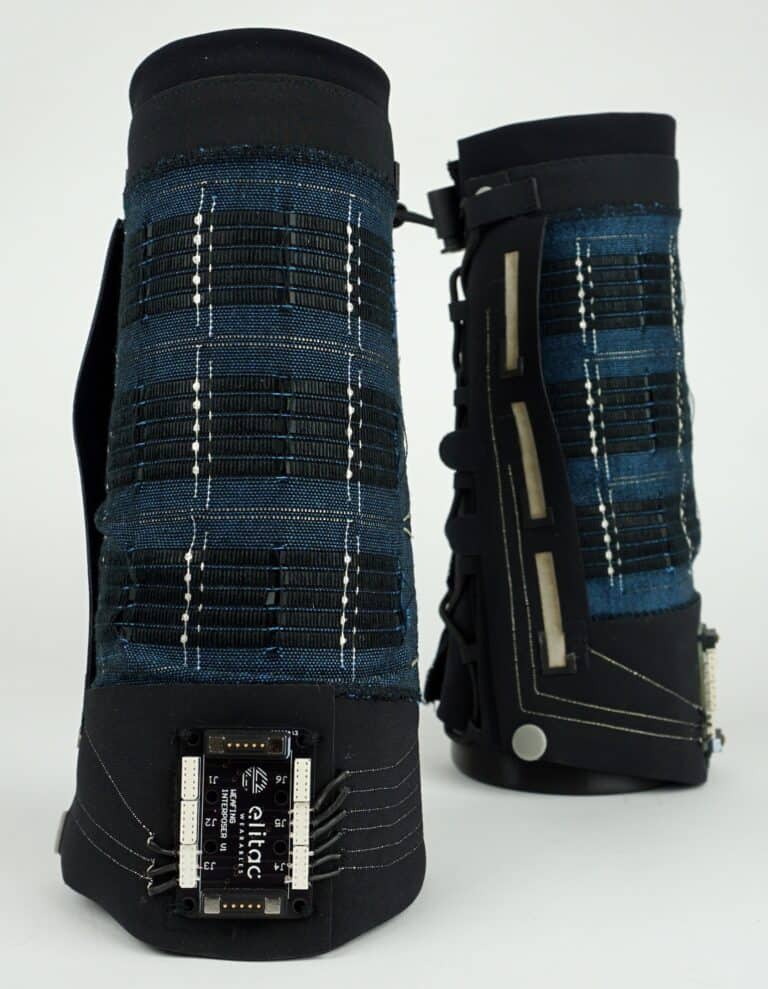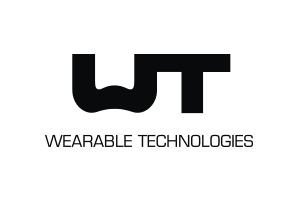WEAFING

What is the WEAFING project?
It is a research collaboration between the University of Twente, Cergy Paris Université, Linköping University, University of Borås, Elitac Wearables and WT | Wearable Technologies. Elitac Wearables’ role was to develop the functioning demonstrator garment, and showcase a relevant application of the textile muscle. Elitac Wearables designed a sleeve that enables users to send and receive touches during video conferencing conversations. For example, grandparents could share affectionate touches with their children or grandchildren over a distance. The developed garment feels similar to normal clothing, and we used e-textile techniques to achieve this.
 This project has received funding from the European Union’s Horizon 2020 research and innovation programme under grant agreement No 825232. It ran from 2019 – 2024.
This project has received funding from the European Union’s Horizon 2020 research and innovation programme under grant agreement No 825232. It ran from 2019 – 2024.
Interested? Contact us to find out more

Why smart textile muscles?
With these smart textiles we can generate completely new and different haptic sensations. In addition to vibrations, we can let the wearer feel soft pressure or a stroke, meaning we can access different receptors of the tactile sensory system. In consequence, these garments will let us communicate information via haptic feedback in more diverse ways.
Importantly, the textile muscles will also be softer and more pliable than traditional electronics, and light-weight. The fact that they can be seamlessly integrated into fabrics and garments will open up a myriad of new ways to design and produce wearable haptics.
Possible applications:
Next to haptic feedback, there are a multitude of applications of smart textile muscles.
Interested? WT|Wearable Technologies created a book that showcases the application areas. The book is available for dowload from the WEAFING website.
Smart textile muscles: How do they work?
We see incredible potential for these ‘textile muscles’. They will allow us to design next-gen wearables: garments that feel like traditional clothing – soft, pliable, without any rigid parts – but with all the added functionality that haptic feedback offers.
Christina Bodenstein | Project Lead Workpackage 7: Demonstrator Garment | Elitac Wearables
WEAFING project status
The project has finished in January 2024. Elitac Wearables has integrated the smart textile muscles into a social touch sleeve that has been evaluated the University of Twente with a user population. Although the haptic sensation is not yet as strong as we would like it to be, the consortium partners have made significant scientific progress on the design and fabrication of electro-active yarns and how to weave and knit these electro-active yarns into fabric to create smart textile muscles.
Research consortium partners

It all starts with designing yarn that is electroactive. That will be done at Linköping University in Sweden – a UT partner within the European Consortium of Innovative Universities (ECIU). There, they have developed polymers that contract and expand upon the application of a potential. Yarns with these ‘electroactive polymers’ result in actuators.

Chemists of the University of Cergy-Pontoise France will develop an ionic gel to support the electroactive yarn, enabling operation in-air.
Chemists of the University of Cergy-Pontoise France will develop an ionic gel to support the electroactive yarn, enabling operation in-air.

One of the conditions is that the polymeric gel cannot be too sticky, because the yarn needs to be further mechanically processed during the subsequent textile production. This is done at the University of Borås, Sweden, where the yarn is woven or knitted into advanced fabrics. The woven or knitted patterns make up for a large part of the design of the contractions, the so-called textile muscle.

The control mechanism of the textile muscle and the distribution of pressure is developed at the University of Twente, the Netherlands. Together with research in the perception of textile touch on the skin, these researchers will lay the foundation for our future smart clothing.

Elitac Wearables will develop a functioning demonstrator garment, incorporating the research results from the other partners and our own expertise in haptic feedback technology.

The role of Wearable Technologies is to communicate results to communities of interest, and to identify application cases that guide the prototype development
.
Contact us
If you have any questions about the WEAFING project or are interested in partnering with Elitac Wearables for your own project, please leave your details in the form and we will be in touch as soon as possible.

